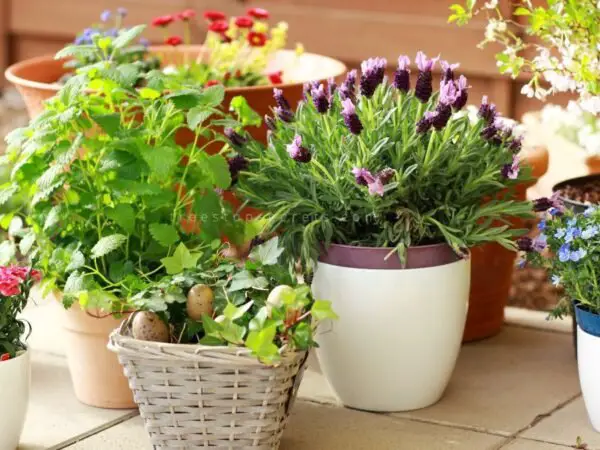Sunflower Plant Spacing
Importance of Plant Spacing
When cultivating sunflowers, plant spacing is a critical factor that impacts overall yield and plant health. It has been found that plant spacing is positively related to individual plant yield in sunflower production systems. This relationship holds true even under varying water conditions, indicating that spacing is more important than irrigation in determining final plant yield.
Proper seed placement and plant density are essential to manage, as they influence yields and the competitiveness of crops against weeds. Ensuring adequate spacing allows each plant to access sufficient nutrients, water, and sunlight, which are critical for their growth.
Optimal Plant Population
Determining the optimal plant population for sunflowers involves considering factors such as soil type, sowing date, and the variety chosen. Research indicates that the optimum population for high-yielding sunflowers is between 50,000 and 75,000 plants per hectare.
A study conducted in North Dakota over three years compared various row spacings and plant populations for oilseed hybrids. The findings revealed that a 12-inch row spacing consistently provided the highest yield response across different plant populations (Top Crop Manager).
| Plant Population (per hectare) | Yield |
|---|---|
| 50,000 | High |
| 65,000 | Very High |
| 75,000 | High |
Proper row spacing at a density of 65,000 plants per hectare can significantly enhance sunflower crop performance. By adhering to these guidelines, we can ensure our sunflowers thrive and reach their full potential.
Planting Sunflowers
Seed Placement Considerations
When planting sunflowers, seed placement and plant density are critical factors that can significantly influence yield and the competitiveness of crops against weeds (MAS Seeds). Proper seed placement ensures that each sunflower has enough space to grow and access the necessary nutrients and sunlight.
To achieve optimal seed placement:
- Consider the soil quality and its ability to retain water and nutrients.
- Ensure that seeds are evenly distributed to avoid overcrowding.
- Maintain a consistent planting depth to promote uniform germination and growth.
Row Spacing Impact
The impact of row spacing on sunflower crops cannot be overstated. Proper row spacing helps in maximizing yield and ensuring healthy plant development. Research conducted in North Dakota over three years compared various row spacings and plant populations for oilseed hybrids, revealing significant differences in yield.
| Row Spacing (inches) | Yield Increase Compared to 30-inch Row Spacing |
|---|---|
| 12 | 33%, 37%, 24%, 16% over four years |
| 18 | Moderate increase |
| 30 | Baseline |
The study found that a 12-inch row spacing consistently provided the highest yield response compared to wider spacings. In four out of six years, the 12-inch spacing yielded 33%, 37%, 24%, and 16% more than the 30-inch row spacing.
Regarding plant populations, the study indicated that lower densities were more favorable. Specifically:
- 18,000 plants per acre performed better than higher densities, such as 22,000 and 26,000 plants per acre.
| Plant Population (per acre) | Performance |
|---|---|
| 18,000 | Best |
| 22,000 | Moderate |
| 26,000 | Least favorable |
For optimal sunflower growth, it is essential to balance both row spacing and plant population. By doing so, we can ensure that sunflowers have the space and resources they need to thrive, leading to higher yields and healthier plants.
Best Practices for Sunflower Growth
Early Planting Benefits
Early planting of sunflowers can lead to better yield performance by offsetting the flowering to a period with lower water stress for the crop. When we plant sunflowers early in the season, they have a better chance of establishing a strong root system before the hotter, dryer months set in. This root system helps the plant access deeper soil moisture, making it more resilient to drought conditions.
Temperature Tolerance
Sunflowers are known for their temperature tolerance, especially during the early stages of growth. At the cotyledon stage, sunflowers can withstand temperatures of -5°C to -7°C. However, negative temperatures after the appearance of the first true leaves can be fatal for the crop. It's important for us to monitor the weather closely during the initial growth stages to ensure the seedlings are protected from unexpected frosts.
| Growth Stage | Temperature Tolerance |
|---|---|
| Cotyledon Stage | -5°C to -7°C |
| Post Cotyledon | Sensitive to frost |
Sunflower seedlings often escape damage from light frost, but they are warm-natured plants and do not tolerate freezing temperatures. Ensuring proper spacing sunflowers in the garden can also help in reducing the risk of frost damage by allowing better air circulation and reducing humidity around the plants.
By considering these best practices, we can optimize the growth and yield of our sunflower crops. Early planting and understanding temperature tolerance are key aspects of successful sunflower cultivation.
Sunflower Spacing Guidelines
Single Plant Spacing
When planting sunflowers, proper spacing is essential to ensure healthy growth and optimal blooms. For single plants, we recommend spacing sunflowers at least 11 inches (30cm) apart. This distance allows each plant to receive adequate sunlight, nutrients, and water, thus promoting robust growth and preventing overcrowding.
In addition to the spacing between individual plants, rows of sunflowers should also have a minimum gap of 11 inches (30cm) between them. This spacing guideline helps in maintaining good air circulation around the plants, reducing the risk of diseases and pests.
| Plant Type | Space Between Plants | Space Between Rows |
|---|---|---|
| Single Sunflowers | 11 inches (30cm) | 11 inches (30cm) |
Source: GrowVeg
Spacing for Extremely Tall Varieties
For extremely tall sunflowers or those that grow into multi-branched bushes, more space is needed to accommodate their larger size and prevent competition for resources. We recommend spacing these varieties about 3 feet (1 meter) apart. This increased spacing ensures that each plant has enough room to grow to its full potential without being hindered by neighboring plants.
| Plant Type | Space Between Plants | Space Between Rows |
|---|---|---|
| Extremely Tall Sunflowers | 3 feet (1 meter) | 3 feet (1 meter) |
Source: GrowVeg
Proper spacing is a key factor in growing healthy and vibrant sunflowers. By following these guidelines, we can ensure that our sunflowers have the best conditions to thrive and produce beautiful blooms.
Sunflower Growing Tips
Sunflower Behavior in Sunlight
Sunflowers are heliotropic, meaning they turn their flowers to follow the movement of the Sun across the sky from east to west and then return at night to face the east, ready again for the morning sun. This phenomenon occurs during the earlier stages before the flower grows heavy with seeds.
Sunflowers will twist around to face the south or west to seek the most abundant source of sun, which may be away from your garden (GrowVeg). They grow best in locations with direct sunlight (6 to 8 hours per day) and require long, warm summers to flower well.
To ensure optimal growth, it's important to place sunflowers in an area with ample sunlight and shelter from strong winds, such as along a fence or near a building. Larger sunflower varieties may become top-heavy, and a strong wind can topple them. Here's a quick reference table for sunlight needs:
| Sunflower Type | Sunlight Requirement |
|---|---|
| Standard Varieties | 6-8 hours/day |
| Dwarf Varieties | 4-6 hours/day |
Frost Tolerance and Protection
Sunflowers are sensitive to frost and cold temperatures. They thrive in slightly acidic to somewhat alkaline soil (pH 6.0 to 7.5) that is well-draining and not too compacted to allow their long tap roots to stretch out (Almanac).
To protect sunflowers from frost, it's important to plant them after the last frost date in your area. If a late frost is expected, cover young sunflower plants with a frost cloth or another protective covering overnight. This will help to shield them from the cold and prevent damage.
Here are some tips for frost protection:
- Plant sunflowers after the last frost date.
- Use frost cloths or protective coverings for young plants.
- Choose a sheltered planting location to reduce wind exposure.
By understanding sunflower behavior in sunlight and taking measures to protect them from frost, we can ensure our sunflowers grow healthy and strong. These tips will help us achieve beautiful blooms that brighten our gardens and homes.
Sunflowers for Crop Management
Use as "Shelter" Plants
Sunflowers, beyond their aesthetic appeal, offer practical benefits in crop management. They can be strategically planted as "shelter" plants to provide shade for sun-stressed crops. This is particularly beneficial in hot climates where excessive sunlight can hinder the growth of certain plants.
Tall varieties of sunflowers can also serve as natural trellises for climbing plants like runner beans. By planting sunflowers alongside these crops, we can create a supportive structure that promotes healthier growth.
| Use Case | Benefit |
|---|---|
| Shade for sun-stressed crops | Reduces heat stress |
| Trellises for climbing plants | Supports growth of runner beans |
Research Findings on Sunflower Production
Research conducted in North Dakota highlights the benefits of solid seeded oilseed sunflowers. The study found that these sunflowers yield the highest when planted in narrow rows. This suggests that close spacing can enhance sunflower production, making it a valuable practice for maximizing crop yields.
| Planting Method | Yield Outcome |
|---|---|
| Solid Seeded | Highest Yield |
| Narrow Rows | Enhanced Production |
By understanding and implementing these crop management strategies, we can optimize the growth and productivity of both sunflowers and companion plants.
Image Source: Paid image from CANVA





